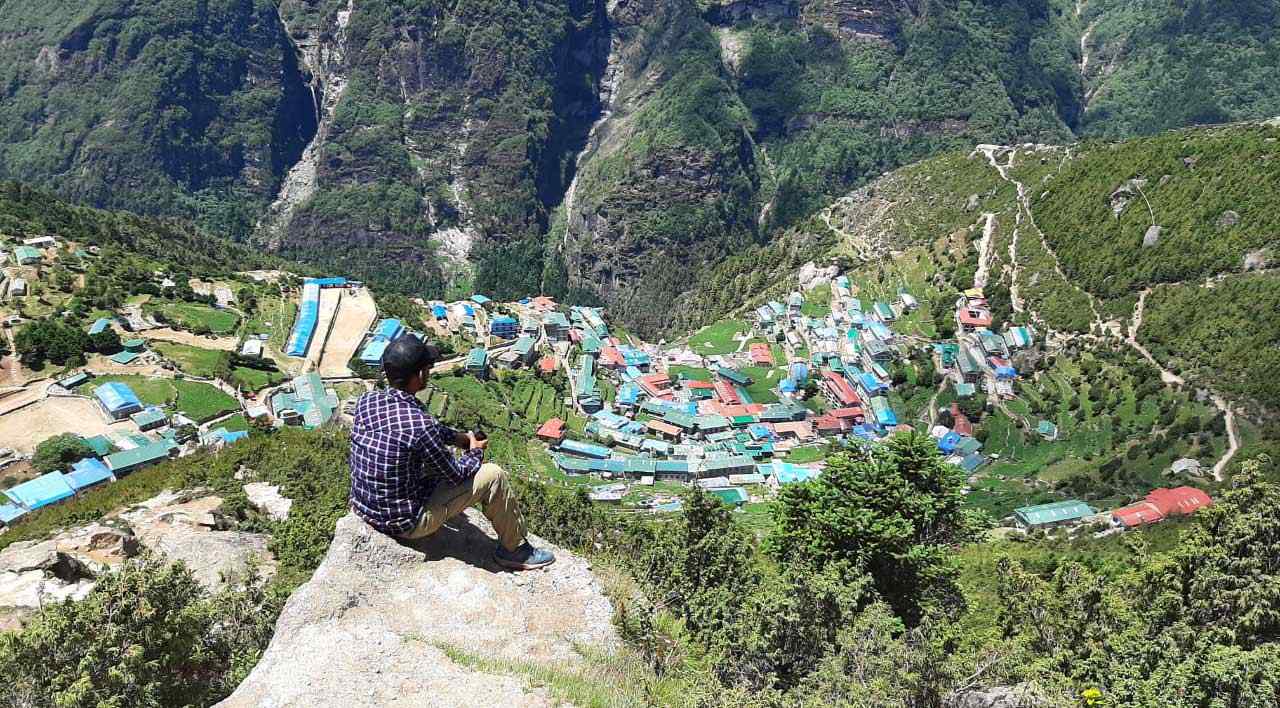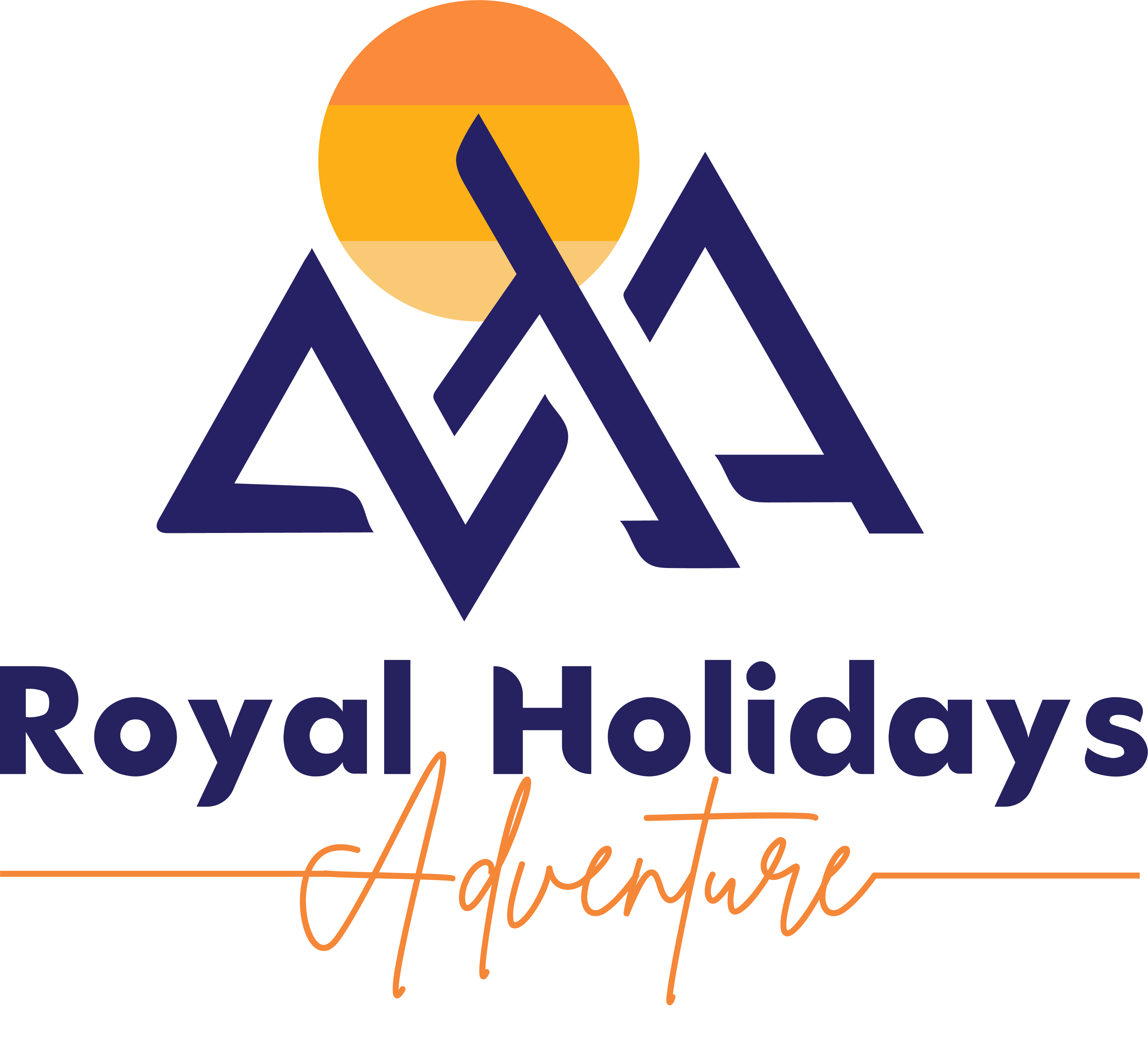
Amongst all the popular trekking routes in Nepal, Everest Base Camp Trek has gained so much admiration. So much, so that it is a common sight of gridlock on the trails as well as the accommodation stoppages. For all those who still have this spectacular destination on their bucket list, it is better to stay prepared about the Everest Base Camp Difficulties, Trek Cost, Trek Permit, Trek Itinerary, and other important aspects. Nepal is geographically stuck fast between the high Himalayan peaks and the scorching Indian jungles. Nevertheless, the majestic nation is an extraordinary land of snow-capped peaks, notable Sherpas, diligent yaks, antique monasteries, and divine mantras.
The Everest Base Camp, for who haven’t yet visited but have been planning to do so, is a walk of a lifetime in the Khumbu region of Nepal. It allows travelers to visit tranquil hilltop villages and trek through primeval and mystifying landscapes. The views of the sensational peaks of the Himalayan range including the laudable Mt. Everest during the awesome hike are out of the ordinary. Experiencing local food, culture, and mountain lifestyle during the adventurous trip is an opportunity like none other.
Before giving details about the Everest Base Camp Difficulties, Trek Cost, Trek Permit, Trek Itinerary, and other useful tips, we have mentioned some major highlights as well as some trivial information about the Everest Base Camp Trek below:
Everest Base Camp Trek Highlights
-
- An adventurous and scenic flight from Kathmandu to Lukla.
- Explore the traditional villages and bask in the warm hospitality of the Sherpa people.
- The ambiance of Tengboche Monastery, the highest monastery in the world.
- Trek through one of the highest trekking trails in the world.
- Trek to the foothill of the highest mountain Mt. Everest.
- Witness breathtaking panoramic views of the Himalayas from Kala Patthar.
- Walk past the world’s biggest Khumbu Glacier.
- Traverse along the world’s longest Ngozumpa Glacier.
- Hike amidst the serenity of the unruffled Gokyo Lakes.
- Conquer the great three passes of Cho La, Renjo La, and Kongma La.
- Take a break at the Hillary Museum.
- Stroll around the colorful markets of Namche Bazaar.
- Enjoy the Himalayan neighborhood from Sagarmatha National Park.
- Climb up the natural vantage point at Gokyo Ri.
- Acclimatize with a hike up to the world’s highest Hotel Everest View.

Everest Base Camp Trek Difficulties
-
- The most difficult and the underestimated aspect of trekking in the Everest region is the altitude.
- Acute Mountain Sickness could hit hard to anyone, even to healthy trekkers.
- Blisters and attacks of viruses (cold, flu) and giardia (diarrhea).
- Dehydration is almost frequent.
- Limited WiFi, phone connection or power on the trek.
- ATM and hot showers come with extremely exclusive prices.
- A limited supply of water and low temperature don’t allow you to shower – so you will stink horribly in two weeks time.
- Flights in and out of Lukla are often canceled due to bad weather.
- Over crowdedness during peak seasons causes difficulties in getting standard rooms to sleep, water crisis and toilet tragedies (squat toilets could be sickening).
- Scams – Prices are pretty high. The higher you climb, the more expensive it gets
- Accommodation is expected to be anything but luxury.
- Food and nutrition can’t be expected to be the best.
- You certainly have to walk a lot.
- For those fearing heights – it’s scary.
- Weather can become terribly bad at times causing difficulties.
- Khumbu cough is deadly; if the cough catches you, it can get terribly violent.
- Meatless weeks as slaughtering are forbidden in the Khumbu region; traded meat could be very stale and unhealthy.
- Not possible to get a proper view of Everest from the base camp, Kala Patthar is much better for perfect viewing.
Everest Base Camp Trek Cost
How much does it cost to go on the Everest Base Camp Trek? This must certainly be the most frequently asked question by an adventure traveler who has never been to Nepal. As a matter of fact, it is quite unconvincing for a novice traveler as he would find various range of prices for the same trek as provided by different trekking agencies over the internet. Whichever be the company providing trips to the Everest Base Camp, the prices will depend on so many factors such as:
-
- The number of days a trekker would wish to spend to complete the trip. Various agencies offer from 12 to 18 days to do the same trek causing variation in prices.
- The season to do the Everest Base Camp trek also affects the pricing. As a rule of thumb, offseasons are less expensive to travel than the peak seasons.
- The nature or source of purchase of the trek also brings variation in prices. Purchasing from a third-party agent will obviously incur higher charges as they would add their commission to the actual price. Direct purchase from the trekking agency in Nepal would lower down the Everest Base Camp Trek cost. Similarly, purchasing from other travel agents, online agents, local guides or online travel group agents would see different price structures.
It is best to consider a local trekking company rather than depending on bigger budgeted international companies. International companies are bound to pay their staff in their own currency leading to higher package costs. While in Nepal, the staff will be paid in local currency thereby making the trip costs comparably lower. On a positive note, booking a trip with a local company definitely will be helping the local economy and showcasing an example of sustainable tourism.
Based on the services and facilities provided, the Everest Base Camp Trek cost offered by private companies ranges from US$ 1200 to US$ 5000. Booking your trip with a Nepali trekking agency would cost somewhere between US$ 1200 and US$ 1800. The inclusions and exclusions of the trip will widely vary from one company to another depending on the services they provide. It has been a common practice for travelers to hire only a trekking guide and no other services from the trekking agency. Doing so will incur them comparatively very less money ranging from US$ 600 to US$ 800 after negotiation. Some trekkers hire independent guides who are not affiliated with any trekking agency. Although it is not quite secure for a traveler to randomly pick up a guide for his upcoming tour, some trekkers get connected to the guides who served them in the past and arrange for the trek privately without the knowledge of the agency. Doing so will incur trekkers a price tag ranging from US$ 400 to US$ 500 after bargaining.
Other cheaper options to reach the Everest Base Camp is to hire a guide cum porter. Some of the foreign trekkers know this trick to cut down their cost. As they have had already been to the base camp in the past, they find it comfortable just to hire a guide-porter. Doing this will incur them a price ranging from US$ 400 to US$ 500 after negotiation. Likewise, some trekkers are well acquainted with the trekking trails and the teahouses on the Everest trail. So, they hire only porters to carry their luggage. Doing this will incur them a price ranging from US$ 150 to US$ 400 after bargaining, of course. The cheapest possible way to reach the Everest Base Camp is probably trekking independently without a guide or a porter; it incurs you nothing except your food and accommodation cost.
Everest Base Camp Trek Permit
There are two mainstream trailheads to reach the Everest Base Camp – one begins at Jiri after a frantic bus ride from Kathmandu. The other one is the regular trail beginning from Lukla after an exhilarating flight from Kathmandu. Now, when it comes to acquiring trekking permits, there are different permits to purchase depending on the routes travelers wish to pursue. With controversies and differences in opinion, the old Trekker’s Information Management System (TIMS) card is now no longer required. On the contrary, a new local entry permit has been introduced for those heading towards the Everest Base Camp. Taking the regular Kathmandu-Lukla flight and beginning to trek from Lukla requires the following permits:
-
- Khumbu Pasang Lhamu Rural Municipality Entrance Permit (enforced since October 2018): The local governance collects NPR 2000 from each foreign trekker at Lukla. It is to be noted that this permit cannot be obtained in Kathmandu.
- Sagarmatha National Park Entry Permit: The existing permit can be obtained either at the Nepal Tourism Board Office in Kathmandu or else at the National Park entrance gate in Monjo. The entry fee costs NPR 3000 per person with an extra 13% VAT totaling the cost to NPR 3390. The Park entry fee for nationals from SAARC countries is only NPR 1500 per person.
- TIMS card for trekkers taking the Jiri route: For independent trekkers, TIMS card will cost NPR 2000 per person while for organized trekkers, the cost is only NPR 1000. TIMS card can be obtained at the Nepal Tourism Board office in Kathmandu.
- Gaurishankar Conservation Area Project Entry Permit (GCAP): Trekkers beginning from Jiri must purchase this permit which will cost NPR 3000 per person for both independent as well as organized trekkers. This permit can be obtained either in Kathmandu or at Shivalaya.
For acquiring the Khumbu Pasang Lhamu Rural Municipality Entrance Permit and Sagarmatha National Park Entry Permit, travelers require to present their passports only. For GCAP, trekkers will additionally require two passport photos and also require to fill up a form prior to obtaining the permit. For those traveling independently, it is very obvious that they might face a lot of hassles while obtaining their permits, which is not the case for organized trekkers.

Everest Base Camp Trek Itinerary
Although there are several variations in the Everest Base Camp Trek Itinerary offered by various different trekking agencies in Nepal, the ultimate goal is to reach the base camp. Some companies take as less as 12 days to complete the trip while a few others may take up to 18 days to complete the same trip. On average, most of the companies try to wrap up the trekking program in 14 to 15 days. Mentioned below is our standard Everest Base Camp Trekking Itinerary that requires 14 days to complete. We have allowed sufficient time for acclimatization at higher elevations in order to avoid any mishaps that may arise:
Day 01: Arrival in Kathmandu and trip preparation (1340m)
Day 02: Fly to Lukla and trek to Phakding (2651m)
Day 03: Trek to Namche Bazar (3440m)
Day 04: Acclimatization Day – Namche Bazaar
Day 05: Trek from Namche Bazaar to Tengboche (3868m)
Day 06: Trek from Tengboche to Dingboche (4353m)
Day 07: Acclimatization Day – Dingboche
Day 08: Trek from Dingboche to Lobuche (4950m)
Day 09: Trek from Lobuche to Everest Base Camp (5370m), back to Gorakshep (5164m)
Day 10: Hike up to Kala Patthar (5550m); trek down to Pheriche (4371m)
Day 11: Trek from Pheriche to Namche Bazaar
Day 12: Trek from Namche Bazaar to Lukla
Day 13: Flight back from Lukla to Kathmandu
Day 14: Transfer to the airport; final departure
Conclusion
Although there are numerous hurdles and difficulties while embarking on this high-altitude Everest Base Camp Trek, the rewards are plenteous. Tackling the undulating paths and lack of oxygen over 5000m and various other setbacks, nonetheless, is a part of an out-of-the-world experience. However much of a grumble-bag a trekker may seem while encountering the complexities, the eventual destination is guaranteed to obliterate his annoyance.
When it comes to trekking cost, trekkers get for what they pay. All trekkers have their own requirements thereby incurring different costs. However, the cost for entrance permit is consistent and each traveler pays the same amount. Trekking itineraries of different agencies have small variations arising out of reasons like alternate routes, the trailhead, and fly back by helicopter options. In a nutshell, the name Everest Base Camp invokes revelations of towering peaks and sky-tall altitudes. A good number of people succeed in actually standing atop the highest mountain in the world whereas several hundred make it up till the base camp.



















